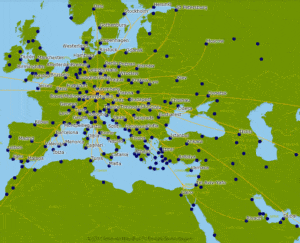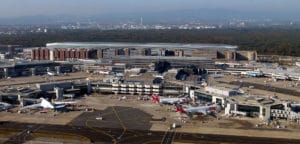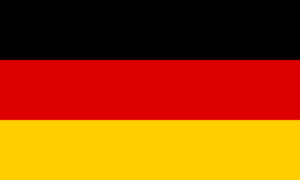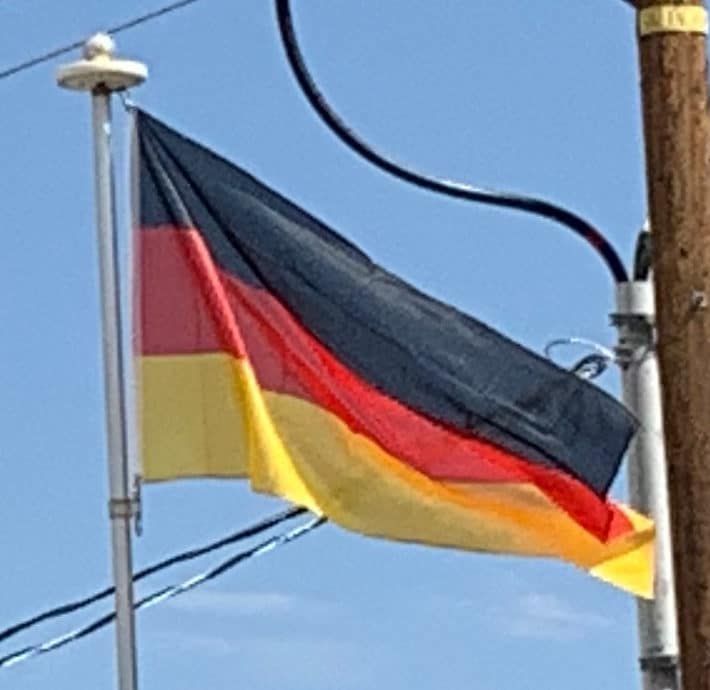
Germany’s largest airline is Lufthansa, which was privatised in the 1990s. Lufthansa also operates two regional subsidiaries under the Lufthansa Regional brand and a low-cost subsidiary, Eurowings, which operates independently. Lufthansa flies a dense network of domestic, European and intercontinental routes. Germany’s second largest airline was Air Berlin, which also operated a network of domestic and European destinations with a focus on leisure routes as well as some long-haul services. Air Berlin declared bankruptcy in 2017 with the last flight under its own name in October of that year.
Charter and leisure carriers include Condor, TUIfly, SunExpress Deutschland, MHS Aviation and Germania. Major German cargo operators are Lufthansa Cargo, European Air Transport Leipzig (which is a subsidiary of DHL) and AeroLogic (which is jointly owned by DHL and Lufthansa Cargo).
Frankfurt Airport is Germany’s largest airport, a major transportation hub in Europe and the world’s twelfth busiest airport. It is one of the airports with the largest number of international destinations served worldwide. Depending on whether total passengers, flights or cargo traffic are used as a measure, it ranks first, second or third in Europe alongside London Heathrow Airport and Paris-Charles de Gaulle Airport. Germany’s second biggest international airport is Munich Airport followed by Düsseldorf Airport.

There are several more scheduled passenger airports throughout Germany, mainly serving European metropolitan and leisure destinations. Intercontinental long-haul routes are operated to and from the airports in Frankfurt, Munich, Düsseldorf, Berlin-Tegel, Cologne/Bonn, Hamburg and Stuttgart.
Berlin Brandenburg Airport is expected to become the third largest German airport by annual passengers once it opens, serving as single airport for Berlin. Originally planned to be completed in 2011, the new airport has been delayed several times due to poor construction management and technical difficulties. As of September 2014, it is not yet known when the new airport will become operational. In 2017 it was announced that the airport wouldn’t open before 2019. In the same year a non-binding referendum to keep Tegel Airport open even after the new airport opens was passed by Berlin voters.
Flag of Germany:
The flag of Germany or German flag is a tricolor consisting of three equal horizontal bands displaying the national colors of Germany: black, red, and gold. The flag was first adopted as the national flag of modern Germany in 1919, during the Weimar Republic, until 1933.

Since the mid-19th century, Germany has two competing traditions of national colors, black-red-gold and black-white-red. Black-red-gold were the colors of the 1848 Revolutions, the Weimar Republic of 1919–1933 and the Federal Republic (since 1949). They were also adopted by the German Democratic Republic (1949–1990), albeit, since 1959, with an additional (‘socialist’) coat of arms.
The colors black-white-red appeared for the first time only in 1867, in the constitution of the North German Confederation. This nation state for Prussia and other north and central German states was expanded to the south German states in 1870–71, under the name German Empire. It kept these colors until the revolution of 1918–19. Thereafter, black-white-red became a symbol of the political right. The national socialists in 1933 re-established these colors along with the party’s own swastika flag. After World War II, black-white-red was still used by some conservative groups or by groups of the far right – as it is not forbidden, unlike proper national socialist symbols.
